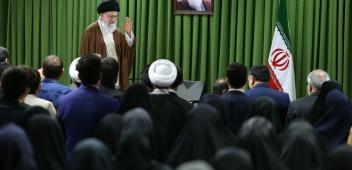Why Australia needs a security rebalance
The pandemic has blown up any idea that we can easily spot the future threats to Australia. So how do we prioritise our finite security resources? Originally published in the Australian Financial Review.

Trailing in the wake of the AUKUS announcement that Australia will obtain nuclear-powered submarines is a key unanswered question: how are we going to meet the $100-billion-plus price tag? According to former Defence secretary Dennis Richardson it’s necessary to “grow the defence budget to 3 per cent of GDP to ensure the submarines do not cannibalise other defence capabilities”. But what of non-Defence capabilities?
So a broader question needs to be asked: how should we allocate finite resources against a widening array of national security risks? Washington is in the midst of its own rebalance. Coming on the heels of the withdrawal from Afghanistan, the AUKUS announcement may signal that the long-delayed “pivot” towards Asia, and away from the Global War on Terrorism, is under way.
How should Australia rebalance? Australia’s security environment has probably never been more complex. China and jihadist terrorism are far from the only potential threats. National security planners must weigh the risks of populist nationalism – including in the United States – and threats from right-wing terrorism. The North Korean and Iranian nuclear programs pose growing challenges. And the climate emergency is intensifying. COVID-19 should, if nothing else, have shaken any confidence we have about the sources of future threats.
Ministers should lead this discussion. The pandemic may have been the conversation starter we needed.
Adding to this complexity, China poses a wide spectrum of potential threats; ranging from the geo-economic to the military and spanning the so-called grey zone. That is, actions that are assertive, or even aggressive, but fall short of being conflictual. Beijing is using means overt and covert to reshape our region, and even interfere in Australia’s democracy. Examples include China’s creeping annexation of the South China Sea and persistent cyber intrusions.
Stronger military capabilities – like the submarines – can strengthen our defences against military threats. But these are, at best, largely irrelevant to the more immediate contest in the grey zone. At worst, they will spur China to work harder to influence Australian decision-making in the long period before the first submarines are built.
To prevail in the grey zone, Australia will have to draw more on its diplomatic and intelligence capabilities. Funding for Australian diplomacy has, however, been steadily decreased for many years. Intelligence agencies received a major funding boost in the aftermath of 9/11 but remain focussed on counter-terrorism. The relative paucity of other security in the early 2000s enabled Canberra to concentrate narrowly on the jihadist threat to an extent that is unimaginable today.
It’s now necessary to right-size counter-terrorism so that it is more commensurate with the risk and so that resources are made available for other challenges. Counter-terrorism has improved enormously over the past 20 years, with a host of new tools – from legislation to technical intelligence gathering.
But the hard truth is that right-sizing will require accepting more risk. That’s easier said than done. The rhetoric and successes of the global war on terrorism have created a public that is especially intolerant of the risk posed by jihadists. We need to loosen the jihadist’s unique hold on the public imagination.
Whether the Biden administration can successfully rebalance remains to be seen. The President’s assertion that “the United States is no longer at war” is precipitate at best. The CIA is reportedly shifting resources to focus more on China. But the Taliban’s victory in Afghanistan was followed by widespread calls to offset the loss of a forward US presence with increased investment in counter-terrorism. This discussion is, typically, focused on technical solutions, especially over-the-horizon capabilities.
Rightsizing counterterrorism requires accepting terrorism as a problem to be managed, rather than one which can be solved. It follows that the balance of effort should be domestic, where governments have more control, rather than internationally where the risk of unintended consequences is far greater.
The Taliban’s victory is a reminder that counter-terrorism cannot be a purely domestic undertaking. But the Taliban also exemplify the collapsing distinction between geopolitics and counter-terrorism. The world’s most extreme Islamist government is now desperately seeking good relations with the state that most oppresses Muslims: China.
Australia’s rebalance requires an improved national conversation about risk and threats. Public servants have a role to play. Australia’s security chiefs are coming out of the shadows and their increased engagement of the public, including an annual threat assessment delivered by the director-general of ASIO, is a welcome trend. This could be enhanced by a bigger picture assessment delivered regularly by the director-general of national intelligence (not unlike that provided to Congress by his US counterpart). Rather than just list the threats this should provide some sense of prioritisation.
But ministers should lead this discussion. The pandemic may have been the conversation starter we needed. Australia’s public debate over the policy response to COVID-19 has undergone numerous twists and turns. But as we move out of Fortress Australia, there is a widening consensus the real issue is how, rather than whether, to live with the virus.
That’s true of most threats to national security. There are few solutions and a greater need for risk management and considered trade-offs. Canberra should be clear about this and have greater faith in the benefits of public debate. We will face more hard national security choices and more debate will help us make better decisions.



